Autos
Crossover craze continues with three new rides offering panache
Ford Ecosport, Kia Niro, Jaguar E-Pace among standout models
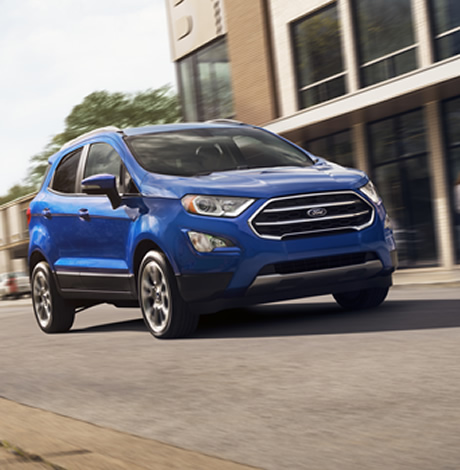
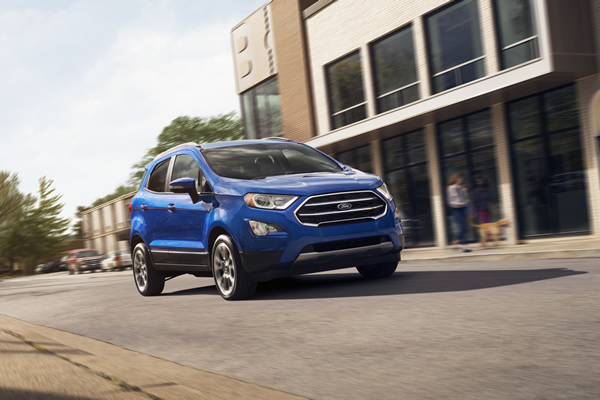
Ford EcoSport
FORD ECOSPORT
$20,000
Mpg: 23 city, 29 highway
Zero-60 MPH: 9.8 seconds
As if Ford didn’t have enough SUVs and other haulers — think Edge, Escape, Explorer, Expedition, Flex and assorted pickups — there’s now the subcompact EcoSport. This crossover is teeny tiny, barely longer than a Mini Cooper sedan. That means the EcoSport fits anywhere, with a tight turning radius to maneuver quickly into almost any parking spot.
Fold down the rear seats to access 50-plus cubic feet of cargo space, an area 25 percent roomier than the Mini Cooper. Along with raised seating for better driver visibility, there’s a standard rearview camera and optional blind spot monitor with rear cross-traffic alert. But there’s no forward-collision system, lane-departure warning or automated emergency braking. That’s a bummer, as is the lackluster giddy up in either the three-cylinder turbo or the four-cylinder (non-turbo) with all-wheel drive.
Both engines are gas thirsty, which is a surprise for such a small and rather lightweight vehicle. Still, the ride is comfier than expected, even on the sporty SES model with its firm chassis. And there are lots of cool extras, depending on trim level and options, such as paddle shifters, heated steering wheel, eight-inch touchscreen with nav system, Bang and Olufsen stereo and the user-friendly Sync Connect system with apps and wi-fi hotspot.
KIA NIRO PLUG-IN HYBRID
$28,000
Range: 105 miles (electricity/gas), 46 miles (gas only)
Zero-60 mph: 9.0 seconds
Kia is also jumping on the cute bandwagon with its nifty Niro, which looks more like a sporty hatchback than a crossover. The Niro may be much lower to the ground than the Ford EcoSport, but it’s also a foot longer. The result: cargo space is the same in both of these subcompacts. But because the Niro is a plug-in hybrid (there’s also a regular hybrid), it outshines much of the competition by being so green.
Kia clearly wanted a Prius Prime beater, and it succeeds — at times. The Niro is faster, with better cornering and braking. And Kia’s design flair is sleeker and subtler. Yet if the goal is to really broadcast your eco bona fides, then the quirky Prius Prime succeeds nicely (plus, it uses a bit less gas and electricity). Still, the Niro feels livelier and it’s hard not to like the long list of creature comforts and safety features: sunroof, heated/ventilated seats, heated steering wheel, 10-way power driver’s seat, power-folding side mirrors, Harmon Kardon stereo, wireless phone charging, forward collision warning, emergency braking with pedestrian detection and more. The upshot: Kia created a fun, fully loaded ride that belies its hybrid roots.
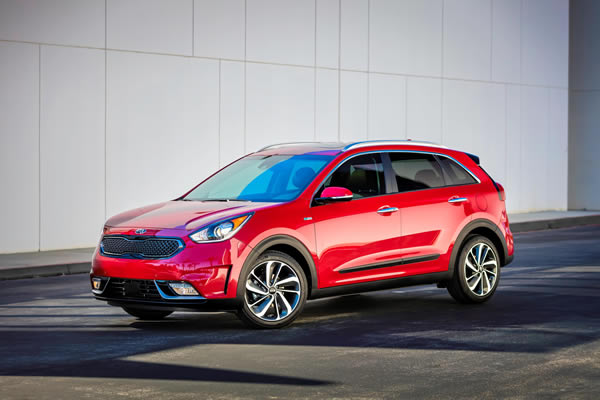
Kia Niro Plug-in Hybrid
JAGUAR E-PACE R-DYNAMIC HSE
$55,000
Mpg: 21 city, 27 highway
Zero-60 mph: 6.4 seconds
Jaguar’s new E-Pace is twice the price of a Kia Niro, but then it’s also twice as nice. With sinewy lines, a come-hither cabin and an exhaust growl so erotic it would make your great aunt blush, this compact crossover should be X-rated.
Jag launched the midsized F-Pace to rave reviews two years ago, and the baby E-Pace is following in its footsteps. While the base model E-Pace is just fine, the R-Dynamic is a real dynamo thanks to a 296-hp four-cylinder turbo and the perfectly balanced nine-speed transmission.
Handling seems surer than in the larger F-Pace, with a composed ride on the bumpiest of roads. The HSE is the top trim level on the E-Pace, with 20-inch tires, keyless entry, 18-way power seats, hands-free liftgate and even a heated windshield. Tech features are just as impressive, offering a color head-up display, 10-inch touchscreen, automated parking, bird’s-eye backup camera and the latest safety goodies. You’ll likely end up turning off the high-end Meridian sound system (with 14 speakers and a disco-worthy subwoofer) because the sound is so sublime it’s distracting when driving. More important to focus on just how swift, smooth and stimulating it is to be behind the wheel.
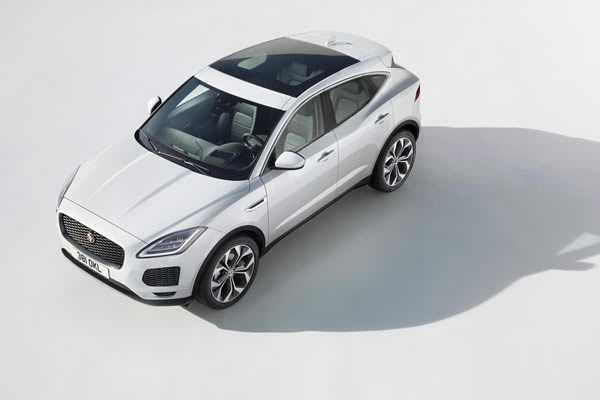
Jaguar E-Pace R-Dynamic HSE
Autos
Sport haulers: Jeep Grand Cherokee, Mercedes GLE-Class
Updated cabins, adept handling, and more
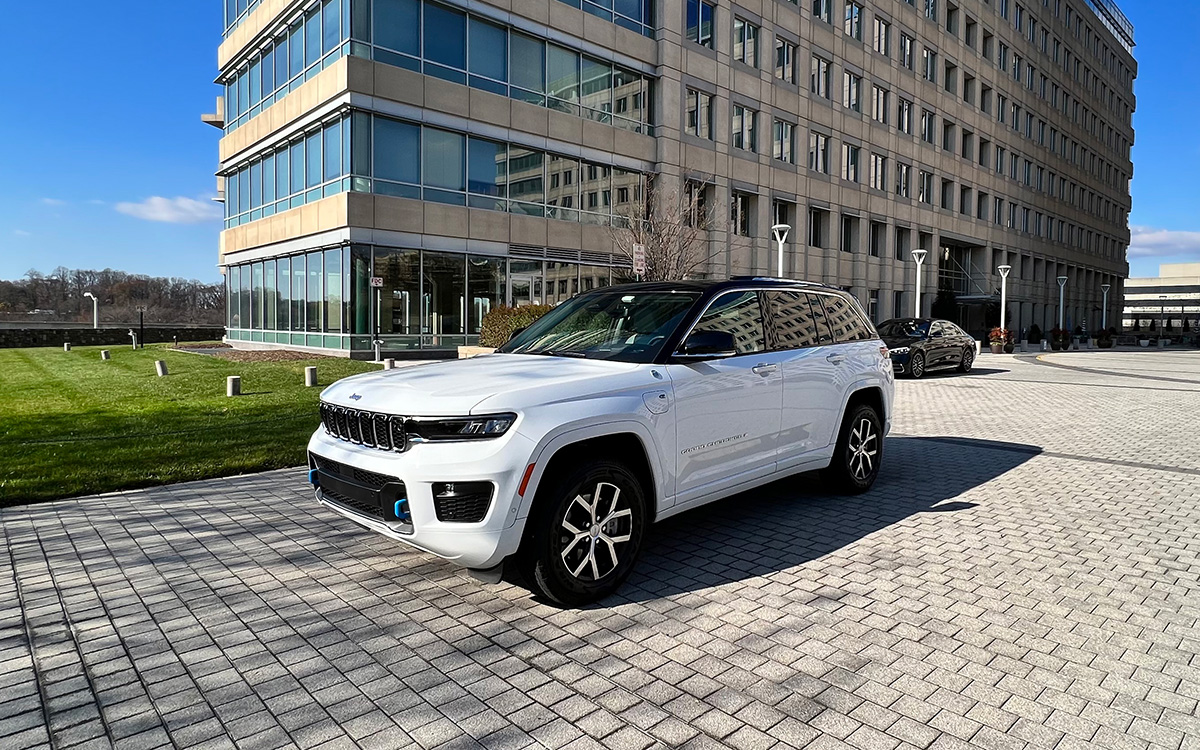
Now that March Madness and the Masters are over, it’s time for, well, everything else. For my husband and me, this means water sports, as in kayaks and rowing sculls, which is why we trekked to the Potomac for the George Washington Invitational regatta last weekend.
Alas, high winds splashed cold water on the event, canceling much of it. But there was still plenty of spirited camaraderie to rival “The Boys in the Boat.”
And I was reminded of my time years ago as a rower with D.C. Strokes, ferrying teammates to races up and down the East Coast. Back then my ride was a dated, rather cramped four-door sedan.
If only we could have paddled around in a sporty SUV like the two reviewed here. Now that would have been some smooth sailing (wink-wink).
JEEP GRAND CHEROKEE
$40,000
MPG: 19 city/26 highway
0 to 60 mph: 7.5 seconds
Maximum cargo room: 37.7 cu. ft.
PROS: Updated cabin, adept handling, strong towing
CONS: So-so gas mileage, no third row, pricey trim levels
IN A NUTSHELL: Rough, tough and buff. It’s doesn’t get much more butch than a Jeep. This year’s Grand Cherokee is no exception, with rugged looks, expert off-road capability and better-than-average towing capacity of 6,200 pounds.
There are a dizzying number of trim levels—more than a dozen—starting with the barebones base-model Laredo at an affordable $40,000. The lineup tops out with the Summit Reserve 4xe PHEV, which is almost twice the price at $76,000 and one of various plug-in hybrid versions available. Those plug-in hybrids can drive up to 25 miles on all-electric power before the four-cylinder gas engine kicks in. Otherwise, you can choose from a standard V6 or V8. Gas mileage on all trim levels is basically the same as the competition.
Where the Grand Cherokee really shines is in the handling. More refined than a Wrangler but less lavish than a Land Rover, this Jeep maneuvers just as well on city streets and highways as it does on bumpier terrain.
I tested the mid-range and mid-priced Overland, which comes standard with four-wheel drive and large 20-inch wheels. It also boasts a slew of niceties, such as quilted upholstery, panoramic sunroof and high-tech digital displays. These include a 10.25-inch infotainment touchscreen and rear-seat entertainment system.
The nine-speaker Alpine stereo, designed specifically for the Grand Cherokee, is pleasing. But I really wanted to hear the boffo 19-speaker McIntosh surround-sound system that Jeep also offers. Sigh, it’s only available on the premium Summit trim level.
MERCEDES GLE-CLASS
$64,000
MPG: 20 city/25 highway
0 to 60 mph: 6.6 seconds
Maximum cargo room: 33.3 cu. ft.
PROS: Lush interior, silky-smooth suspension, speedy
CONS: Some confusing electronics, tight third row, many competitors
IN A NUTSHELL: For a more high-class hauler, there’s the Mercedes GLE-Class. This midsize SUV is similar in size to the Jeep Grand Cherokee. But instead of seating five passengers, the GLE can carry up to seven. Sure, legroom in the optional third row may be tight for taller travelers, but it’s perfect for a cocky cockswain or two.
Six trim levels, ranging from the base-model GLE 350 to two high-performance AMG models. For eco-conscious buyers, the GLE 450e plug-in hybrid arrived earlier this year and can run on battery power alone for almost 60 miles.
My test car was the top-of-the-line AMG 63 S 4Matic, a head-turner in every way. Priced at a whopping $127,000, this GLE looks best in glossy black with the Night Package, which includes tasteful jet-black exterior accents and matte-black wheels. To complete the Darth Vader effect, there’s a deep, menacing exhaust rumble that’s downright threatening.
You expect such a ride to be wicked fast, and it is: 0 to 60 mph in a blistering 3.7 seconds. Yet the carbon ceramic brakes with their devil-red calipers are equally impressive in slowing things down quickly.
Inside, each GLE comes with two large digital displays on the elegantly sculpted dashboard. My favorite feature is the “Hey Mercedes” digital assistant, which responds to voice commands such as opening or closing the sunroof, operating the infotainment system or activating the climate controls.
It’s hard to find sport seats that are more comfortable, especially with the heavenly massage function (though those massage controls could be a bit more user-friendly.) For AMG models, the seats come with red-contrasting stitching and red seatbelts—a nod to the devilish demeanor under the hood.
Considering all the SUVs available in showrooms, few make quite the splash of a GLE.
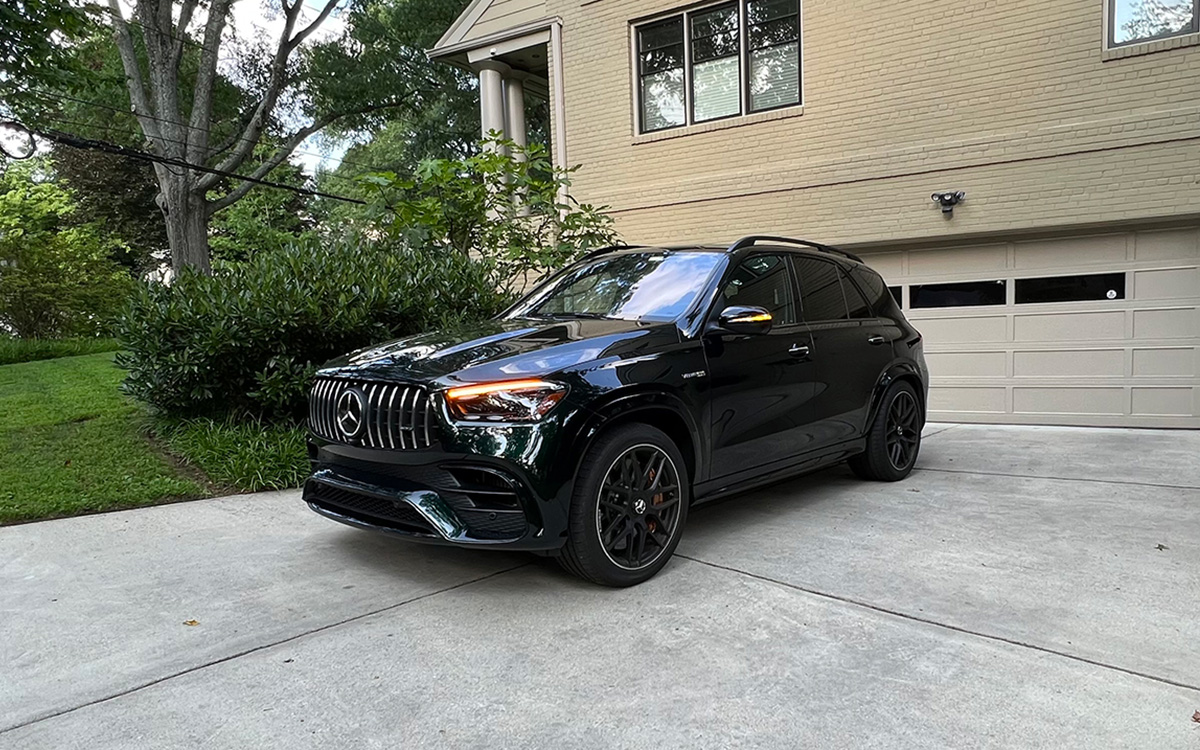
Autos
Glam rides: BMW X6 and Range Rover Velar
Impressive standard features elevate these lower-priced options
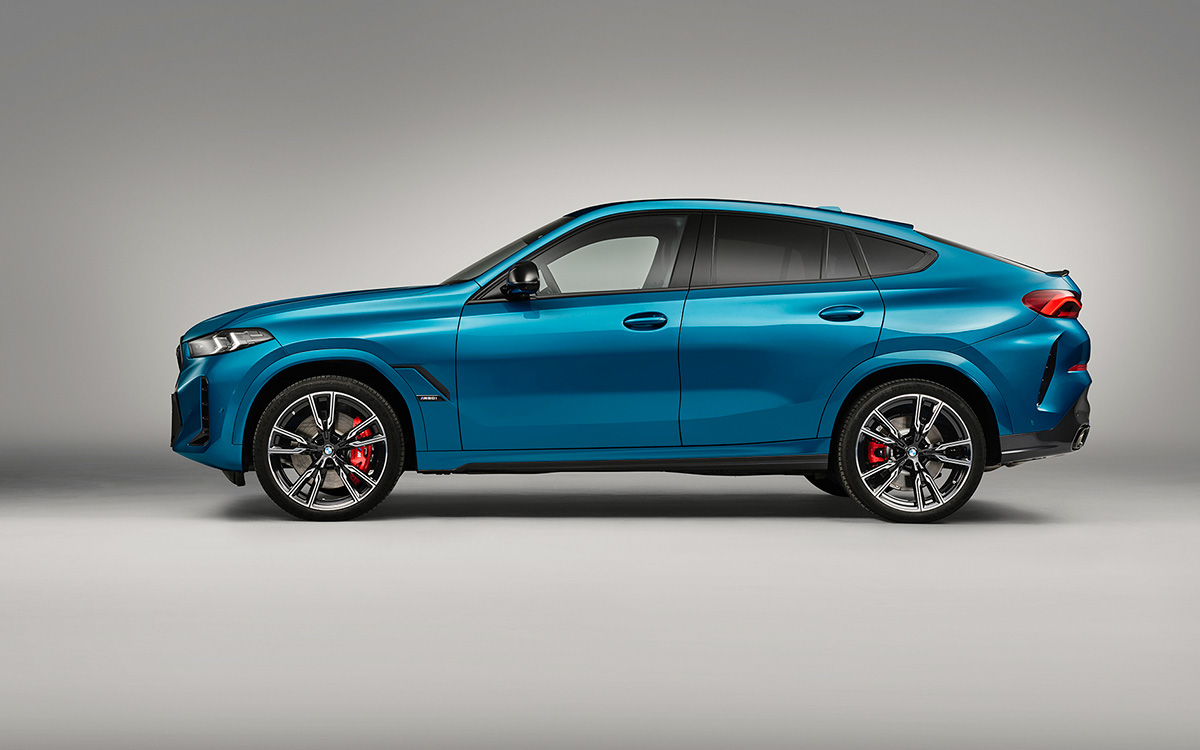
Many sport-utes with ho-hum styling still impress me by offering scads of standard features and a low MSRP. But sometimes it’s hard not to be seduced by what I call glam rides—pricier vehicles with plenty of attitude. You know, like something Cassandro might drive.
BMW X6
$75,000
MPG: 23 city/26 highway
0 to 60 mph: 5.2 seconds
Maximum cargo room: 59.6 cu. ft.
PROS: Outré styling, posh cabin, raw power
CONS: Less rear visibility, limited storage, costly options
IN A NUTSHELL: Trust me, it’s hard not to fall in love with a BMW X6. This recently updated crossover, with its coupe-like profile, swept-back grille and breathtaking acceleration, had me at hello. High ground clearance and oodles of high-tech features turn this high-end hauler into one helluva wild ride.
Sure, the sharply sloped roof hampers rear-seat headroom and cargo capacity. But up front there’s more room than expected, along with a dramatically curved digital dashboard. And the ginormous panoramic moonroof helps make the interior feel quite spacious.
How good is this BMW? Zipping up to Baltimore last month during a day of downpours and clueless commuters, my husband and I started rethinking our promise to never buy a budget-busting vehicle. For us, bad weather and heavy traffic usually result in clenched teeth, heavy sighs and my swearing like a sailor. Yet the hushed cabin, 16-way power front seats and ability to control the stereo and other functions simply by waving my hand were all very Zen. Ditto the finely tuned suspension, steering and braking, which anticipated my every move. Instead of shying away from rush hour on our return home, I leaned in.
Myriad safety features — from forward-collision alerts and blind-spot monitors to lane-departure warnings and a 360-degree camera — batted away any concerns about fender benders. Same for the option packages that allow you to park the X6 automatically, store familiar maneuvers and drive hands-free at up to 85 mph.
Power in the base-model — which is what I test drove — comes from a lively 375-hp turbo, with a 48-volt hybrid system to improve gas mileage. There’s also a smooth eight-speed automatic transmission and all-wheel drive for sure handling on slippery roads. Pricing begins at $75,000, but options on my test car brought it up to—whoa!—88,000.
For more grit and growl, there’s the xDrive60i, with a 523-hp twin turbo that helps this Bimmer sprint from 0 to 60 mph in 4.2 seconds. And the top-of-the-line X6 M Competition with a 617-hp V8 is even faster at a blistering 3.7 seconds. But I am much too afraid to drive this gnarly high-test model—it starts at $128,000.
RANGE ROVER VELAR
$63,000
MPG: 19 city/25 highway
0 to 60 mph: 5.2 seconds
Maximum cargo room: 70.1 cu. ft.
PROS: Refined design, chic interior, lotsa storage
CONS: Tepid base engine, more sedate handling, pricey
IN A NUTSHELL: While Range Rovers are known for being oh-so-classy, the Velar is much sassier than the rest of the lineup.
The sweeping front fascia would make Ariana Grande proud: Svelte grille, sporty wraparound headlights and stretched, corset-like air ducts in the bumper.
Inside, the look is spartan but elegant. All knobs and other switchgear are mostly hidden or activated by an 11.4-inch infotainment touchscreen that seems to hover in front of the dash. Even the ubiquitous cruise control and stereo buttons on the steering wheel seem to have vanished, though look closer and they are tastefully integrated into the design.
While the Velar may be classified as a compact vehicle, it looks and feels much larger. Compared with the midsize BMW X6, both have ample seating for five people. Front-seat dimensions are practically the same, but the supposedly smaller Range Rover has better back-seat headroom and legroom. It also holds almost 20% more cargo.
Built on the same platform as the popular Jaguar F-Pace, the Velar has a relaxed ride compared to the more athletic BMW X6. Power is less aggressive on the Range Rover, with choice of two competent but hardly rip-roaring engines.
Build quality is impressive, including the optional leather-free interior that uses an upscale composite of wool and polyurethane. And while even the base-model comes with interior ambient lighting and a premium Meridian stereo, you can opt for the 17-speaker 3D system for an even more “Maestro”-like experience.
Overall, the Velar may be less of a rabble rouser than the BMW X6, but there’s still plenty here to dazzle the senses.
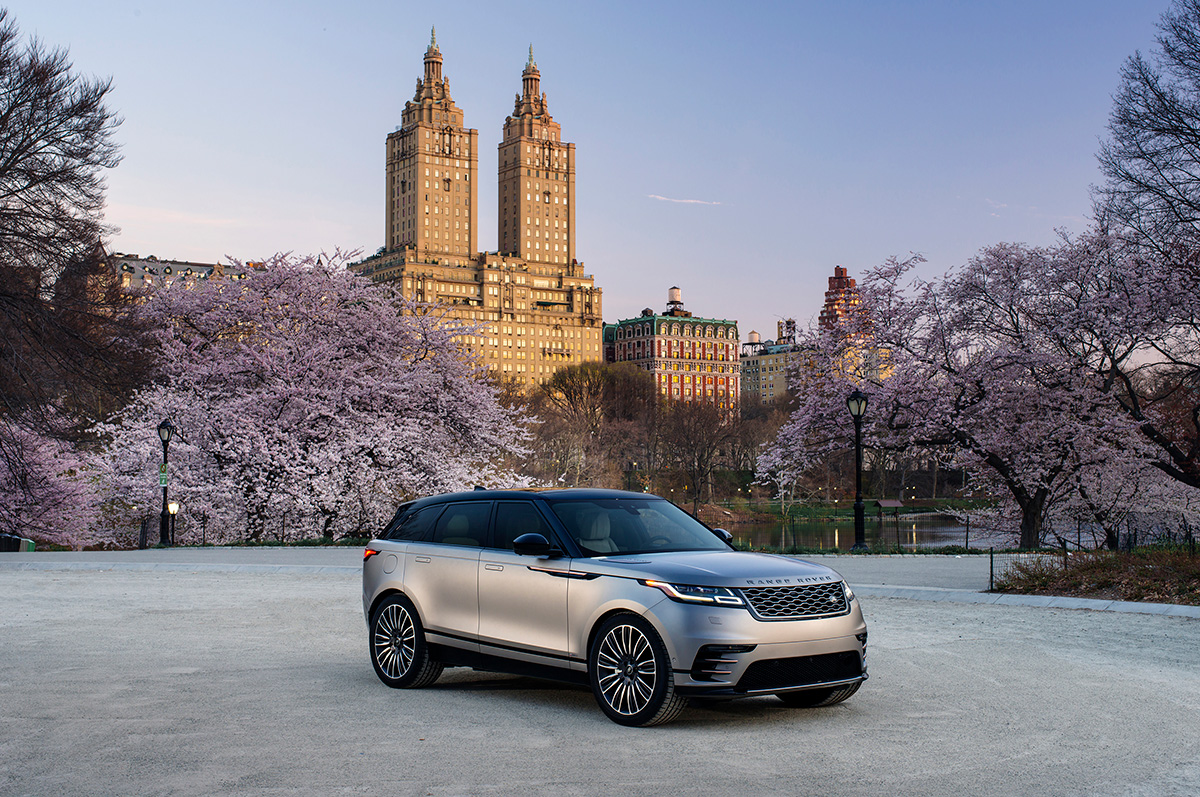
Autos
Rugged yet ritzy: Ford Bronco, Nissan Pathfinder
One offers retro design, the other an edgy and chic look
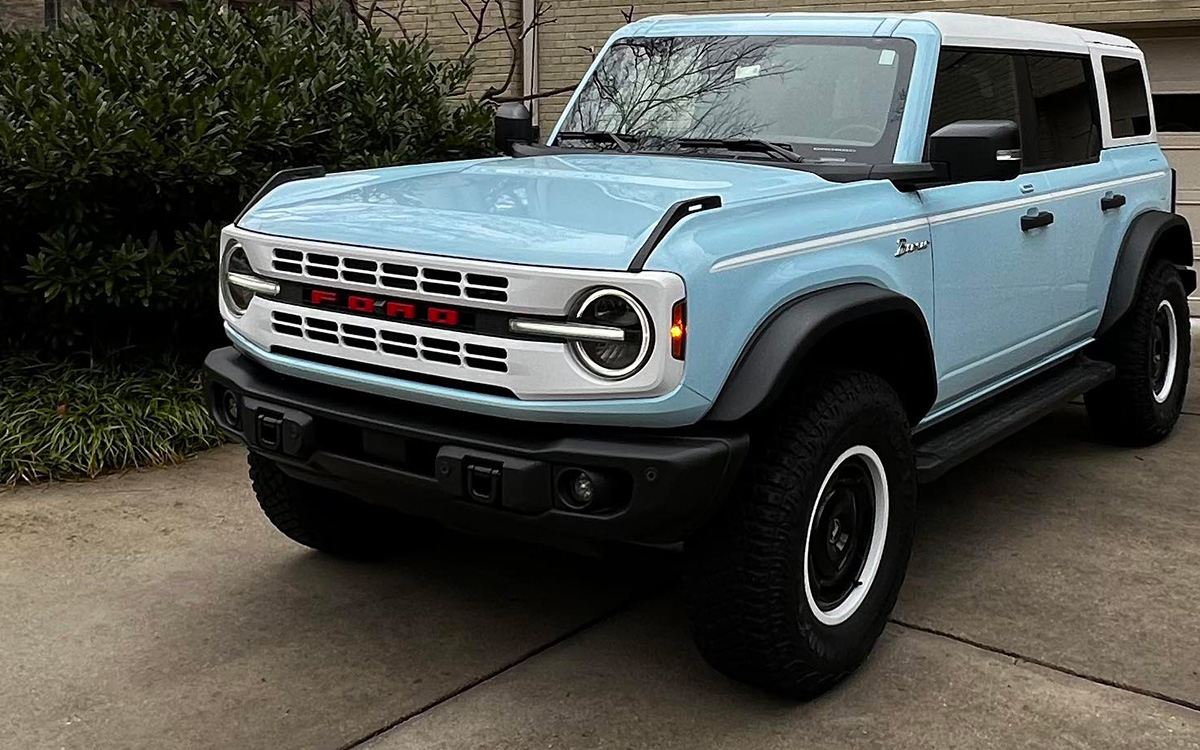
Both the Ford Bronco and Nissan Pathfinder have rough-and-ready reputations. Each boasts butch bona fides and some nifty off-road capability. But dig a bit deeper into your wallet, and you can step up to higher trim levels for added power and a bit more bling.
FORD BRONCO HERITAGE LIMITED EDITION
$70,000
MPG: 17 city/17 highway
0 to 60 mph: 6.2 seconds
Maximum cargo room: 77.6 cu. ft.
PROS: Retro design, rousing engine rumble, myriad amenities
CONS: Low fuel economy, bouncy ride, pricey
IN A NUTSHELL: After a 24-year hiatus, the Ford Bronco came galloping back to showrooms in 2021. Today there are nine trim levels, including the Heritage Limited Edition that I just finished test driving for a week. At $70,000, this Bronco—second only to the $90,000 Raptor—still costs a pretty penny: $30,000 more than the entry-level model. Yet the higher price is worth it, with a gritty V6 turbo that offers much more giddy-up than the standard four-cylinder engine.
There’s also a rad retro design, with heritage-style graphics, multiple skid plates, and special bumpers and fenders. Exterior colors—especially the Robin’s Egg Blue, coupled with a white grille and white roof—are a nice throwback to the 1960s. So are the removable doors and roof panels for a safari-like look à la an old-timey “Wild Kingdom” episode.
Yes, the Bronco is a truck-based SUV, so expect more bounciness than in a Lexus or a Lincoln. But the stable steering and comfortable seats help make up for it. Ground clearance is high, thanks to large 35-inch mud-terrain tires. Luckily, running boards and numerous rubber-lined grab handles make it easy to climb in and out.
Despite the sound-deadening insulation, there’s still a fair amount of exterior wind noise at high speeds. But this makes it easier to hear the sweet sound of the Bronco’s strong whinny, er, exhaust growl.
Along with a vibe that’s decidedly old-school cool, this mid-sizer comes with lots of modern amenities: keyless entry, remote start, heated seats, ambient lighting, dual-zone automatic climate control, 360-degree surround-view camera and 10-speaker premium B&O stereo. New this year is a larger, 12-inch touchscreen. I also liked the huge stowage area, with convenient cargo straps to hold down gear, a flip-up rear window for easy access, and a swing-out door to hold a full-size spare tire.
I guess you could say Ford wasn’t horsing around when it decided to add such a fully loaded Bronco to the stable.
NISSAN PATHFINDER ROCK CREEK
$44,000
MPG: 20 city/23 highway
0 to 60 mph: 7.0 seconds
Maximum cargo room: 80.4 cu. ft.
PROS: Roomy, comfy, muted cabin
CONS: So-so gas mileage, tight third row, many competitors
IN A NUTSHELL: Seeking an SUV that’s more diamonds than denim? Then consider the Nissan Pathfinder, also redesigned just a few years ago and a big step up from the previous model. But instead of retro styling like a Ford Bronco, the look here is a combo of edgy and chic.
That’s especially true with the Rock Creek version, which sports an aggressive front fascia, grille inserts, trendy black cladding, raised off-road suspension, all-terrain tires and tubular roof rack that can hold 220 pounds. “Rock Creek” badging, which is stamped on the side panels and rear liftgate, is also embroidered in stylish orange contrast stitching on the water-resistant seats. All-wheel drive — optional on all other trims — is standard here. And Rock Creek towing capacity, which is 3,500 pounds on most other Pathfinders, is an impressive 6,000 pounds.
The spacious cabin has enough room for up to eight passengers, though third-row legroom is tight. In the second row, you can opt for a pair of captain’s chairs instead of a three-person bench seat. Regardless, those rear seats are heated, which is a nice touch.
Nissan has done a good job of making vehicles that feel as rich and luxurious as those in its high-end Infiniti lineup. On the Pathfinder, that means thicker glass and extra insulation for a whisper-quiet cabin. There’s also brushed-aluminum trim and a sporty flat-bottom steering wheel with paddle shifters. Along with smartphone integration, wireless charging pad and voice-command capability, other tech features include a windshield head-up display, 360-degree bird’s-eye camera, ambient interior lighting, 13-speaker Bose stereo and a slew of safety options.
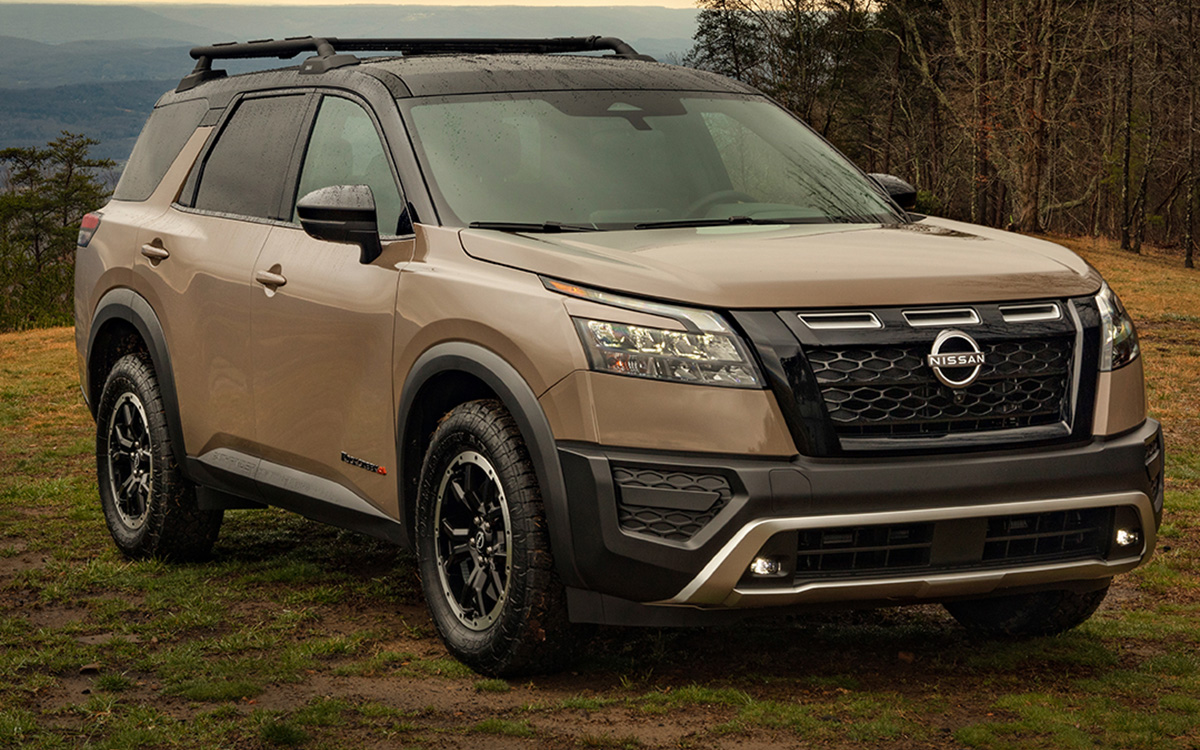
When comparing the Ford Bronco with the Nissan Pathfinder, it’s hard to resist the rip-roaring ride of a fun and feisty Bronco. But the more practical Pathfinder is still plenty adventurous, especially with all the goodies that come in the Rock Creek.
-

 State Department3 days ago
State Department3 days agoState Department releases annual human rights report
-

 Maryland4 days ago
Maryland4 days agoJoe Vogel campaign holds ‘Big Gay Canvass Kickoff’
-

 Politics3 days ago
Politics3 days agoSmithsonian staff concerned about future of LGBTQ programming amid GOP scrutiny
-

 The White House2 days ago
The White House2 days agoWhite House debuts action plan targeting pollutants in drinking water






